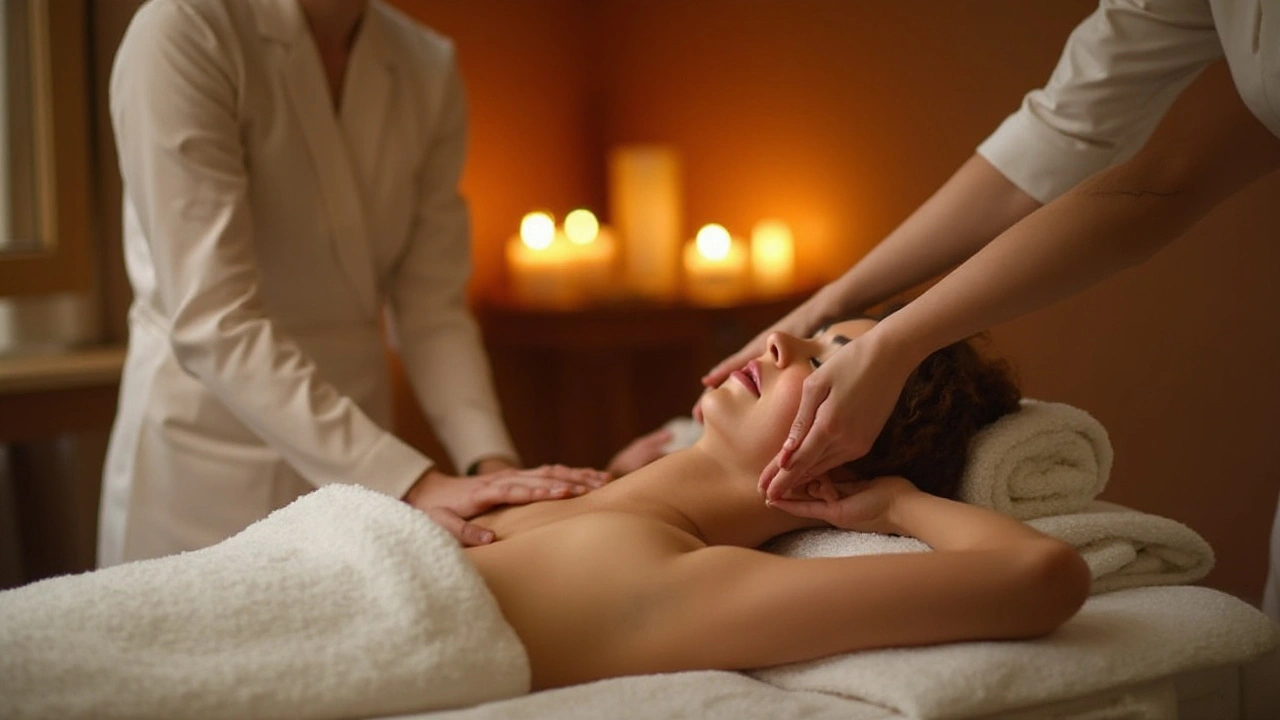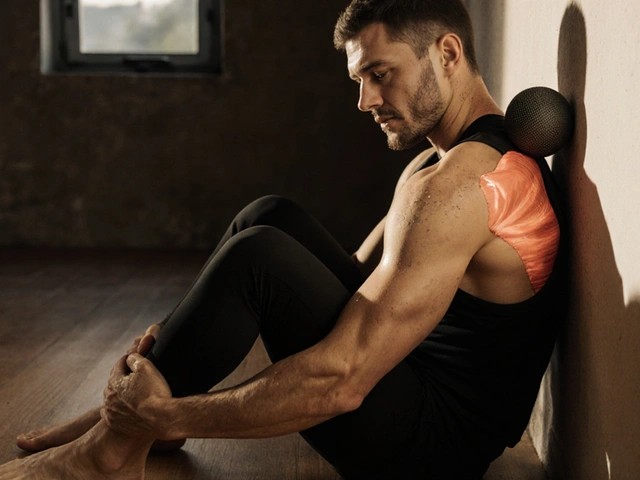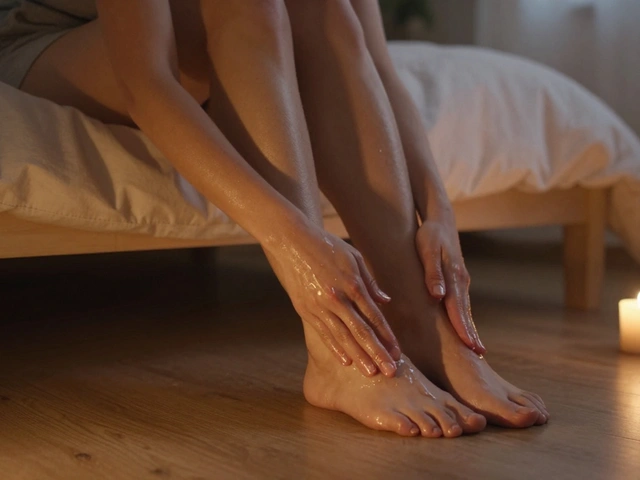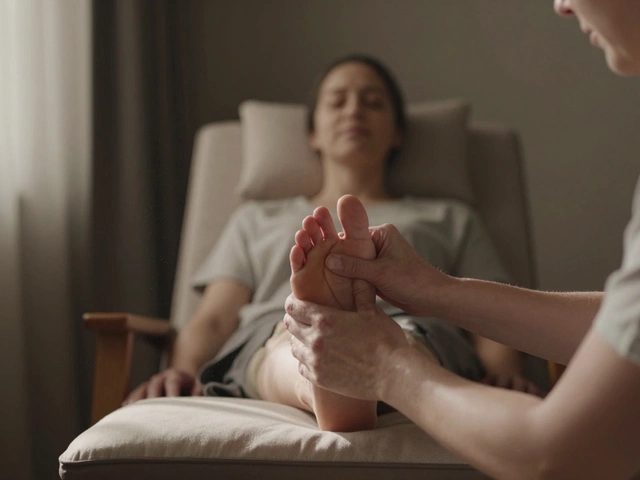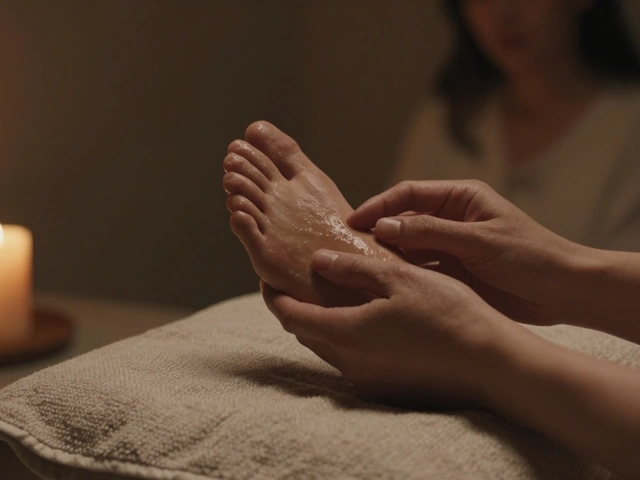In today's hectic world, carving out time for self-care can feel more important than ever. Among the myriad ways to support your mental and physical well-being, Swedish massage stands out as a beloved choice. Known for its gentle yet effective techniques, it has become synonymous with relaxation and rejuvenation.
But what exactly makes Swedish massage the go-to option for many? It originates from a blend of deep history and practical techniques tailored to ease tension and invigorate the body. By diving into its principles and benefits, you empower yourself with knowledge to enhance your self-care practices.
Join us on this exploration of how Swedish massage can play a vital role in your wellness journey. From invigorating strokes to the soothing rhythms of this massage style, learn why it's hailed as a cornerstone of therapeutic touch and how you can integrate it seamlessly into your routine.
- History and Principles of Swedish Massage
- Techniques Used in Swedish Massage
- Health Benefits of Swedish Massage
- How to Incorporate Swedish Massage into Self-Care
- Tips for a Successful Swedish Massage Experience
History and Principles of Swedish Massage
The origins of Swedish massage trace back to the early 19th century, a gift from the hands of Pehr Henrik Ling, a Swedish physiologist who brilliantly merged the best of ancient medical gymnastics and massage techniques. Ling developed a system known as "Medical Gymnastics," a blend of passive and active movements, which laid the foundation for what we now call Swedish massage. This innovative practice was anchored in the belief that physical well-being is intertwined with mental and emotional health, a notion still widely embraced today. In a world where touch therapy was just beginning to gain recognition, Swedish massage quickly distinguished itself as both an art and science of healing.
The principles of Swedish massage are rooted in its five distinct techniques: effleurage, petrissage, friction, tapotement, and vibration, each serving unique functions that seamlessly blend into a symphony of relaxation. Effleurage involves smooth, gliding strokes that warm up the muscles and prepare them for deeper work. It's often complemented by petrissage, which includes kneading actions to release knots and enhance circulation. Friction is all about deep, concentrated pressure to breakdown adhesions and realign muscle fibers, a crucial step in promoting healing. Tapotement, recognized by its rhythmic tapping, stimulates nerves and invigorates the skin, while vibration does just that—it gently shakes or vibrates the tissue to soothe and relax.
These techniques are thoughtfully applied to achieve not just muscular relaxation, but also psychological calmness, underscoring the massage's holistic approach. A touch of trivia here: Swedish massage was initially called the "Swedish Movement Cure," reflecting its broader scope. The essence of this massage lies in the careful synchronization of these techniques, aiming to improve blood flow, reduce stress, and promote an overall sense of well-being. Interestingly, a contemporary scientific study showed that regular Swedish massage could significantly lower cortisol levels by up to 31%, highlighting its profound impact on stress management. According to the Mayo Clinic, Swedish massage is particularly beneficial in resolving tight muscles caused by chronic stress.
"Swedish massage leverages the magic of touch to evoke calmness and balance within," notes Dr. Andrea Furlan, a revered figure in touch therapy research. "It's more than a luxury; it's a vital step towards nurturing one's mental and physical health."
Understanding these historical and practical facets of Swedish massage enriches our appreciation for its enduring legacy. As you embrace this therapeutic form of self-care, it becomes clear why it remains a beloved practice across cultures and generations. Whether seeking relief from the physical stressors of daily life or a momentary retreat to tranquility, Swedish massage is a testament to the timeless healing power of human touch.
Techniques Used in Swedish Massage
Swedish massage is revered for its effective use of specific techniques that form the cornerstone of its therapeutic approach. Each technique serves a unique purpose in easing muscle tension and promoting relaxation. The foundation of Swedish massage rests on five primary strokes: effleurage, petrissage, friction, tapotement, and vibration, all of which contribute to the holistic experience of a relaxation journey that's both calming and invigorating.
Effleurage: The Soothing Glide
At the heart of Swedish massage is effleurage, characterized by long, sweeping strokes that gently warm up muscles and prepare them for deeper work. This technique is not only about physical contact but also acts as an introduction between the therapist's hands and the client’s body. Effleurage strokes are designed to help spread the massage oil, allowing smooth transitions and a continuous flow in the session. A well-executed effleurage can immediately soothe nerves and set the tone for deeper relaxation.Petrissage: Kneading Out the Knots
Petrissage involves the kneading, rolling, and lifting of muscles, aimed at releasing tension that lies beneath the skin. This technique is particularly effective in working on deeper muscle layers and is seen as beneficial for improving circulation and promoting elasticity. A study in the Journal of Clinical Rheumatology found that petrissage can significantly increase blood flow to targeted areas, aiding in faster recovery and reducing muscle soreness. For those experiencing stiffness from prolonged periods of stress, petrissage is often the technique of choice.Friction: The Deep Heat
Friction focuses on deeper tissues and is executed with deeper, circular movements to break down adhesions and scar tissue. Unlike the gentle strokes of effleurage, friction is more localized and targets specific areas of tightness or tension. "This technique is incredibly powerful for releasing chronic tension," says Dr. Lorraine Thompson, a leading massage therapist. By directly addressing the deeper layers of muscle, friction helps in realigning tissue fibers and increasing movement range.Tapotement: Rhythm and Rejuvenation
The rhythmic tapping or percussion known as tapotement adds an invigorating element to the Swedish massage experience. This includes chopping, beating, or tapping motions that can energize the body. Tapotement is often used at the end of a session to wake up the senses, with its short bursts stimulating muscle areas and promoting resilience. For athletes or those needing a boost of energy, tapotement is a cherished technique that leaves the individual feeling refreshed.Vibration: Awakening the Senses
Lastly, vibration involves oscillating movements that help to release tension and encourage deeper relaxation. These movements can be applied softly or with intensity, depending on the desired effect. Vibrations seep through the body, easing nerves and providing profound relief from stress. It's an essential technique for promoting harmony and balance within the body, often leaving clients feeling tranquil and grounded.The thoughtful application of these Swedish massage techniques creates a harmonious blend that targets both physical and mental relaxation. By understanding and experiencing each of these techniques, one can truly appreciate the art of Swedish massage and its profound impact on overall well-being.
| Technique | Primary Benefit |
|---|---|
| Effleurage | Promotes Relaxation |
| Petrissage | Improves Circulation |
| Friction | Breaks Down Adhesions |
| Tapotement | Boosts Energy |
| Vibration | Releases Tension |

Health Benefits of Swedish Massage
Swedish massage is not only a treat for the senses but also a profound therapeutic practice with a broad range of health benefits. This form of massage is particularly renowned for its ability to reduce stress and promote relaxation, making it a vital component of self-care. The methods involved, which include long gliding strokes, kneading, friction, tapping, and shaking, work synergistically to soothe the nervous system. This harmonizing effect can lead to decreased levels of the stress hormone cortisol in the body while simultaneously stimulating the production of serotonin, the ‘feel-good’ chemical. Such biochemical changes can induce an overall state of tranquility and improved mood, enhancing mental clarity and emotional stability.
Beyond relaxation, Swedish massage plays a pivotal role in muscle health. Regular sessions have been shown to relieve muscle tension by promoting circulation. Enhanced blood flow delivers essential nutrients and oxygen to muscles, contributing to faster recovery from physical exertion or injury. This aspect of Swedish massage is particularly beneficial for individuals with physically demanding jobs or athletes who require efficient muscle recovery. Often overlooked, the impact of improved circulation also extends to lymphatic drainage. By encouraging the flow of lymph, the body can more effectively eliminate waste products, bolstering the immune system and aiding detoxification.
A noteworthy advantage also lies in the impact of Swedish massage on chronic pain conditions. Individuals suffering from conditions like arthritis, fibromyalgia, or chronic lower back pain often report significant relief following massage sessions. This relief is largely attributed to the way massage encourages the body to produce endorphins – the body’s natural painkillers. Swedish massage gently stretches and loosens tight muscles and connective tissues, which can alleviate pain while increasing joint flexibility. Such therapeutic effects not only reduce immediate discomfort but also contribute to long-term pain management strategies.
"The use of massage as a healing tool dates back thousands of years in Chinese, Egyptian, Hindu, and Mediterranean cultures. Its effectiveness for reducing stress and improving mood is well-supported by scientific research," says Dr. Michelle Crunkhorn, Professor of Integrative Medicine.
Moreover, regular Swedish massage has a subtle yet profound effect on improving posture. By releasing chronic muscular tension and easing joint restrictions, it aids in correcting posture over time. Good posture, in turn, alleviates stress on muscles and joints, preventing and improving various musculoskeletal issues. An often-cited benefit of improved posture includes reduced risk of injuries and a boost in confidence because posture impacts self-expression and interpersonal communication.
Finally, let’s not overlook the indirect benefits resulting from Swedish massage. Many people realize enhanced sleep patterns post-massage due to its profound relaxation effects. Sleep, as we know, is crucial for recovery, immunity, and mental well-being. Consequently, better sleep patterns contribute to an overall lifestyle change that benefits nearly every aspect of health. Incorporating Swedish massage as part of a relaxation routine can be a transformative experience, rebuilding energy reserves and restoring balance to both mind and body.
How to Incorporate Swedish Massage into Self-Care
Integrating Swedish massage into your personal self-care routine can create a profound impact on your physical and mental well-being. It's more than just a moment of tranquility; it's a mindful practice that fosters a deeper connection with your body and its needs. Start by setting aside a dedicated time each week where you focus solely on your self-care routine. Consistency is key, as this not only helps your body unwind but also trains your mind to associate this time with relaxation and rejuvenation. As part of this routine, preparing your environment is crucial. Opt for a quiet, cozy space with dim lighting and calming music to enhance the therapeutic atmosphere. Essential oils such as lavender or eucalyptus can further amplify the calming effect, engaging your senses and putting your mind at ease.
When considering how to incorporate Swedish massage into this routine, it's important to understand its foundational techniques. At its core, Swedish massage uses a combination of effleurage (long, gliding strokes), petrissage (kneading), friction, tapping, and vibration movements. These methods, when practiced routinely, can relieve tension, improve circulation, and promote relaxation. To begin, you could learn basic self-massage techniques that focus on accessible body parts like your arms, legs, and neck. Using a high-quality, nourishing massage oil can improve your effectiveness, making the strokes smoother and preventing skin friction. Self-massage is a powerful initial step for individuals who may not always have the time or resources to visit a professional massage therapist.
Another way to embrace the benefits of Swedish massage is by scheduling regular sessions with a trained professional. Whether it's monthly or quarterly, having a professional guide you through the massage can enhance the therapeutic effects significantly. Remember, the idea is not to view this as a luxury, but rather a valuable investment into your health. According to the American Massage Therapy Association, regular massages can lead to a noticeable improvement in quality of life by reducing stress and enhancing overall health. If committing to monthly sessions feels daunting, consider starting small and gradually increasing the frequency as you become more comfortable.
Moreover, involving your loved ones by trading massages can also be an enriching experience. This not only helps in building a stronger connection but also allows both parties to reap the benefits of this relaxing practice. Understanding the needs and preferences of your partner ensures a mutually satisfying experience. You can take turns practicing techniques learned from workshops or reputable online resources. This exchange promotes open communication and continuous learning, creating a shared journey toward better well-being.
"Self-care is not a luxury, it's essential. Regular massages are a simple step toward achieving a balanced and healthier lifestyle," affirms renowned wellness expert Susie Ellis.
For those who appreciate the structure, joining a massage class or workshop can further enrich your practice. These learning experiences provide more detailed instructions, allowing you to gain a deeper understanding of the techniques involved. Often, these workshops also introduce elements such as meditation or stretching, complementing the Swedish massage and helping you establish a well-rounded approach to self-care. Such settings are excellent opportunities to ask questions and receive personalized feedback, enhancing your ability to use these skills effectively in your self-care routine.
Finally, reflecting on your experiences through journaling can provide valuable insights into how Swedish massage is benefiting your life. Note the changes you feel physically and emotionally, any shifts in your stress levels, and overall mental clarity. This practice of mindfulness keeps you tuned into your body's responses and encourages continuous improvement of your self-care routine. Incorporating Swedish massage is not merely about the physical relief it brings; it's about nurturing a harmonious relationship with your body and fostering a persistent mindfulness in your daily life.
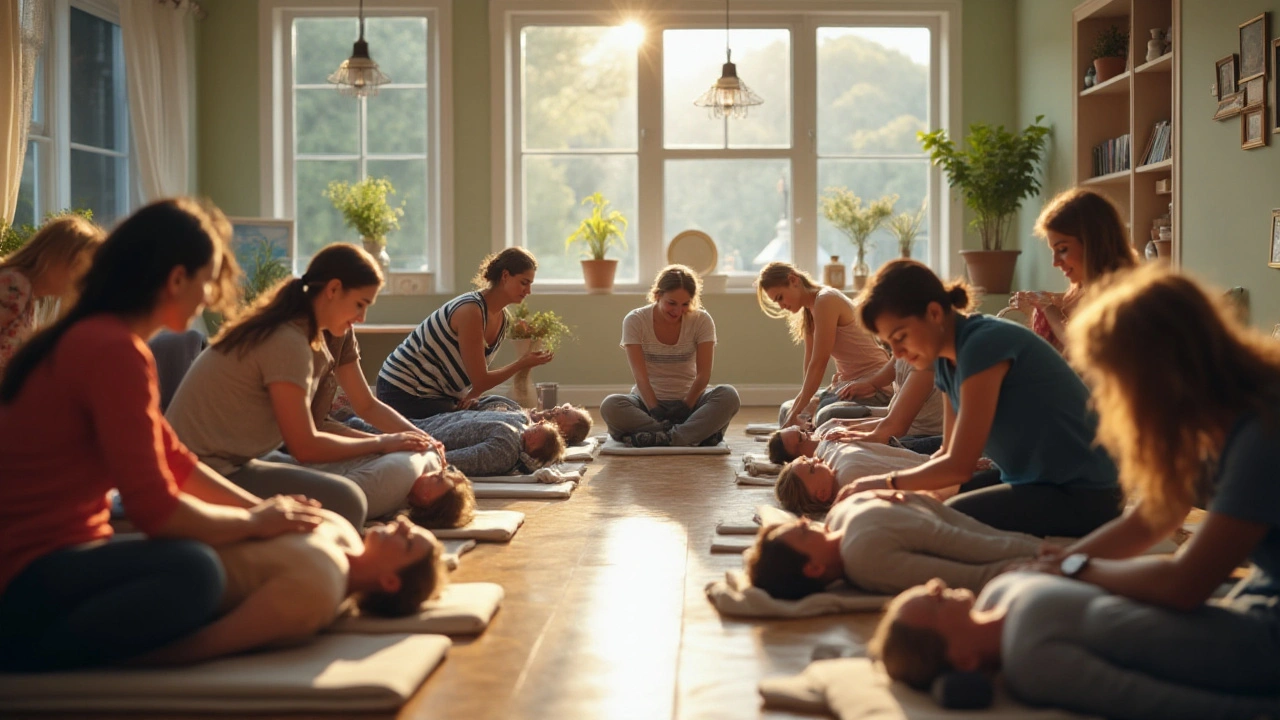
Tips for a Successful Swedish Massage Experience
Embarking on a Swedish massage journey is a wonderful way to prioritize self-care. To ensure your massage experience truly enhances your well-being, a few thoughtful considerations can make a world of difference. Preparation begins even before you step foot into the spa. It’s helpful to drink plenty of water beforehand; this aids in hydration and makes it easier for your body to flush out any toxins released during the massage. Wear comfortable clothing that allows you to ease seamlessly into relaxation as you enter and exit your session. The atmosphere you choose plays a crucial role too, so opt for a spa or therapist that exudes tranquility and professionalism. Speak openly with your therapist about any specific areas you’d like them to focus on or any you’d prefer they avoid, ensuring a tailored experience that suits your individual needs.
A Swedish massage incorporates distinct techniques such as effleurage and petrissage, which are applied in rhythmic, gentle motions to help your muscles relax and improve circulation. To maximize the effectiveness of these techniques, many experts recommend focusing on deep breathing. As you breathe deeply, you're not just relaxing your mind but also promoting oxygen flow throughout your body. This can enhance the sensation of the massage, making it feel even more restorative. According to renowned massage therapist Jane Smith, "Incorporating conscious breathing into your massage session can transform a simple relaxation ritual into a holistic healing experience." A few moments spent practicing guided breathing beforehand can help set the tone.
Additionally, consider the power of aromatherapy. It's an option that can be added to your massage to amplify the relaxation benefits. Essential oils, like lavender and eucalyptus, are often used due to their soothing properties, helping to deepen the sense of calm. Some individuals find it beneficial to pair their massage with calming music or ambient sounds; these can transport your mind to serene places, allowing for a deeper detachment from everyday stresses. Always communicate with your therapist about any scented oils or products you prefer to avoid. Post-massage, keep the benefits rolling by giving yourself a moment to rest and soak in the peace created during your session.
Finally, if you’re someone who frequents Swedish massage sessions, or are considering doing so, there is value in keeping a journal of your experiences. Record what techniques felt most beneficial, what level of pressure you preferred, and how you felt afterwards. This record can be a guide for your future sessions, aiding your therapist in tailoring each massage to your evolving preferences. A strong feedback loop empowers both you and your therapist to make incremental improvements. The beauty of a Swedish massage lies in its ability to adapt to your needs, providing a personalized path toward greater self-care and wellness.

